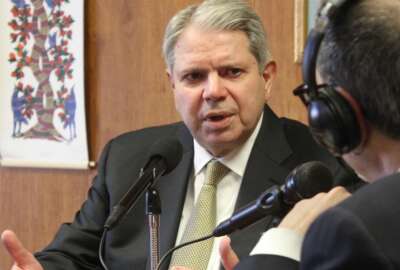Skills gaps in the federal workforce remain a significant barrier to reaching better end results in agencies’ work. But across government, chief learning officers are taking on some of the challenging, long-term work to try to close those gaps.
Generally, skills gaps arise when agencies either don’t have the right skills on staff — or simply don’t have enough employees in the first place — to effectively implement federal programs. Earlier this year, the Government Accountability Office reported that more than half of the government’s biggest problem areas stem directly from mission-critical skills gaps.
Agency chief learning officers (CLOs), often behind the scenes, try to ensure an agency’s workforce has the skills it needs, particularly in mission-critical areas, such as data analytics, IT and cybersecurity. The senior-level CLO position is tasked with helping agencies first identify skills gaps, and then create a talent development strategy to try to improve those skills — including through offering training opportunities for current employees.
Joellen Jarrett, chief learning officer at the Small Business Administration, said it’s equally important to think about current skills gaps as well as what skills will become necessary in the future. In particular, Jarrett said her team is focused on skills development in AI. There is some growing interest from federal employees in AI training opportunities, she said, but it’s still somewhat inconsistent.
“AI courses do get attention, but in pockets,” Jarrett said during an Oct. 26 webinar produced by GovExec. “It depends on what organization we’re talking about. That’s not yet clearly across the board.”
A long-awaited executive order on AI, which President Joe Biden signed Monday, in part called for more federal workforce training in AI. But in the near-term, chief learning officers are already thinking internally about where AI-related training programs can be useful.
AI skills, for example, can be helpful in human resources (HR) departments. For the Department of Veterans Affairs, AI is a field that Chief Human Capital Officer Tracey Therit is focused on.
“Generative AI is becoming part of our vocabulary,” Therit said in a recent Federal News Network panel interview, sponsored by WAEPA. “When you have to write a job announcement, it may not be taking a template and working in Word. It may be a chat with a few queries and a few key words, and all of a sudden, it’s produced. You just need to make sure that it’s meeting your needs and expectations.”
Carmen Garcia, CHCO at the Office of Personnel Management, said her agency’s HR team is also leaning into AI, for example, when creating position descriptions and job classification standards.
“AI is really an interesting field that we are exploring,” Garcia said during the panel interview. “We’re seeing how we can put major duties into our AI sandbox and seeing what kind of position descriptions can be developed out of that.”
Along with some growing interest in AI training, Jarrett said data analytics courses are in high demand right now from employees.
“I think it’s because we’re driving harder at making sure that we’re doing a good job of telling our stories, and the best way to tell the story is with your data,” Jarrett said. “Having a workforce that understands what data to use, how to capture it, how to validate it and how to present it is important.”
In particular, developing data skills can be highly beneficial for the HR workforce, VA CHCO Therit said.
“It is hard to do HR work today if you don’t understand that data and if you don’t know how to visualize that data,” Therit said. “[We’re] making sure that in all of our curriculum, both for new hires and as folks progress into higher grade levels, employees are getting training in those skills that we know that they will need in the future.”
“If we simply give the data to our hiring managers and we’re not equipping them on how to use that data, it can actually be detrimental,” Garcia added. “But as many different parts of OPM are moving from being transactional to being strategic, we are going to help those folks through career pathing and making sure that we are developing internal training programs to address that.”
Whether it’s developing training programs in AI, data or another key workforce skill, the work of chief learning officers doesn’t end there.
“Many of us wear multiple hats. In addition to strategic talent development, you have CLOs that are also in charge of performance management, awards and recognition, engagement, telework, remote work — you name it. It really just depends on in which organization the CLO sits,” Jarrett said.
Because the CLO position is flexible and not standardized across government, Jarrett said it’s important to work with other senior-level workforce positions, particularly chief human capital officers.
“We know that we can’t operate in a vacuum,” Jarrett said.
Jarrett said the Office of Management and Budget’s April memo on organizational health and performance, which called on agencies to strike a balance between telework and in-office work, is one area where CLOs and CHCOs can work closely together.
“That’s an example that is rife with opportunities for the chief learning officers to get involved and to be engaged,” Jarrett said. “But it didn’t come to us, it came to the CHCOs. So having a good relationship with our chief human capital officers and understanding what’s going on at the CHCO Council level is important.”
Copyright
© 2024 Federal News Network. All rights reserved. This website is not intended for users located within the European Economic Area.





